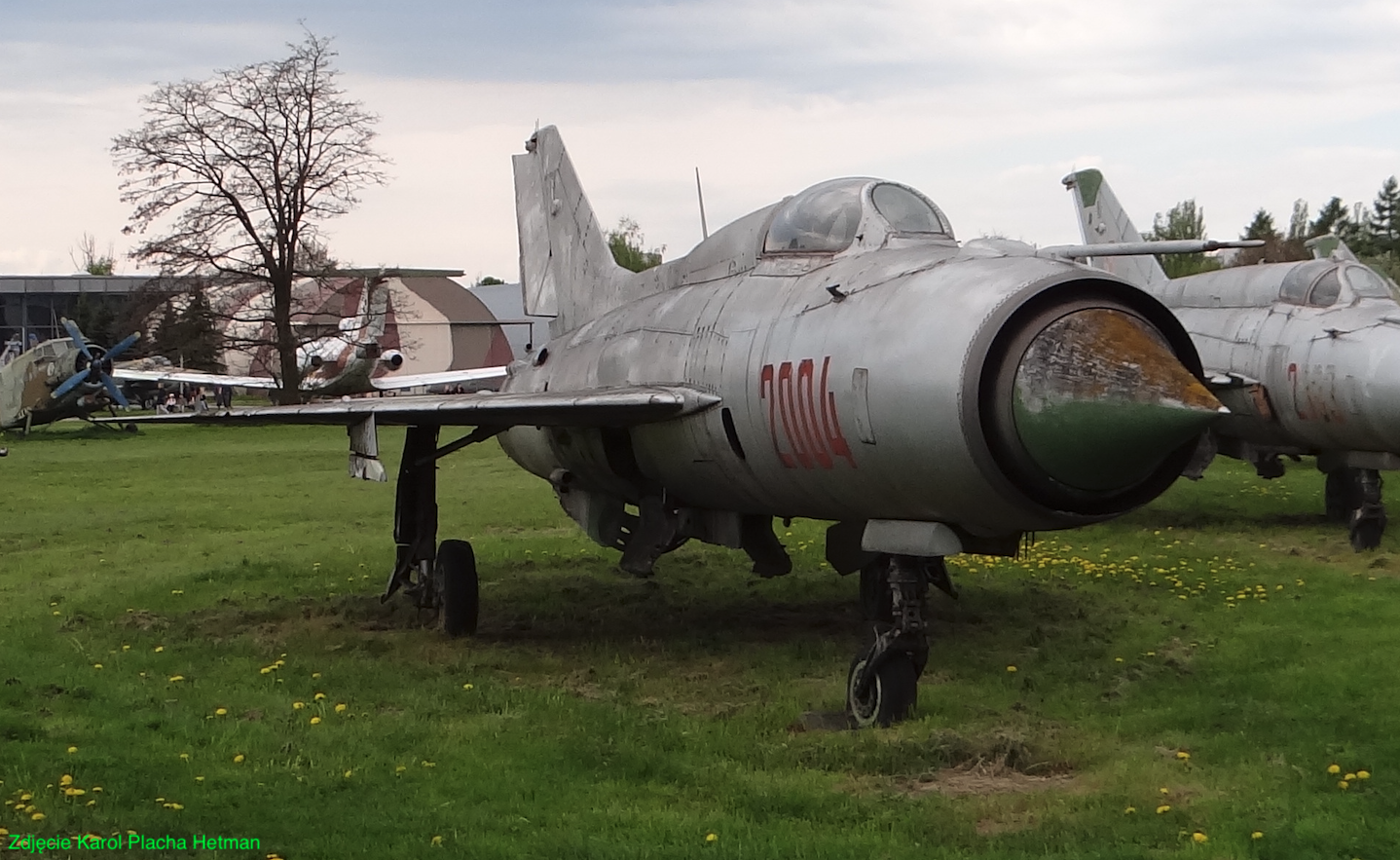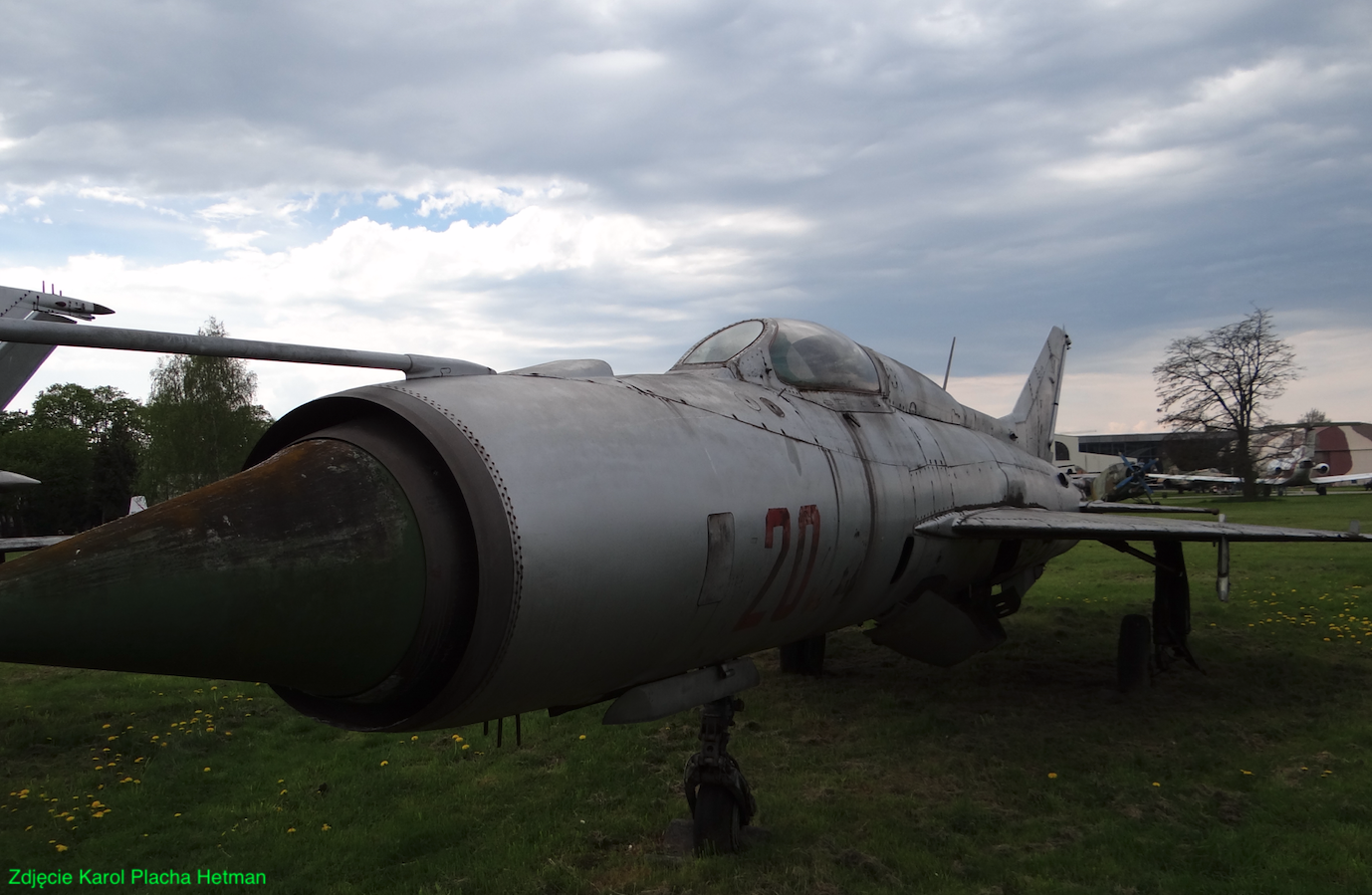Kępno 1966-06-30
Author - Retired Major pilot Janusz Smiatacz.
The tragedy of MiG-21 PF nb 2405 no. 762405 from 1. PLM Warsaw on June 30, 1966.
We are posting an article that was published in "Tygodnik Kępiński" No. 4/2010 on January 28, 2010. The author is a retired major. pilot Janusz Smiatacz.


Photo description: Pilot lieutenant Władysław BETKA died on such a plane, MiG-21 PF.
On January 23, 2008, a CASA 295 plane crashed near the military airport in Mirosławiec, burying 20 Polish military pilots under its remains. Several of my friends died. A few friends were lucky. They got off earlier in Powidz and Krzesiny. Television, radio and the Internet are full of various comments, eyewitness descriptions, guesses and photos from the crash site. The president announced national mourning. Publicity and media hype. This is how it is now, but a dozen or so years ago... THIS WAS NOT TALKED ABOUT!
During the years of the "Cold War", none of the conflicting parties wanted to make public the crashes of military planes. These events were treated as small failures and the investigation into the causes, results and conclusions of these disasters was usually classified as confidential. Now, after many, many years and after a complete change in the geopolitical and military situation, we can learn more about the past. I would like to draw the readers' attention to two of the many disasters that occurred in the post-war history of Polish military aviation, because their sad heroes were "ours" - people from our region.
Pilot from Feliksów.
The first of them was the crash of the MiG-21 plane from the 1st Fighter Aviation Regiment in Mińsk Mazowiecki. It took place on June 30, 1966. The year is important here because at that time these supersonic fighters, which were very modern at that time, had only been in service with the Polish air force for five years. Many pilots were just getting acquainted with this aircraft, with completely different aerodynamic characteristics than those previously known to them (delta-shaped wings) and with increased piloting and combat capabilities, which sometimes led to major problems in piloting this type of aircraft.
The pilot of the MiG-21 that crashed was Lieutenant Władysław BETKA, son of Stanisław, born on January 21, 1939, in FELIKSÓW near Kępno. He graduated from the Officers' Aviation School in Radom in 1962. In 1966, he held the position of senior pilot of the pursuit aviation squadron in the 1st Fighter Aviation Regiment. He was already a first-class pilot, but he did most of his flying in older types of jet aircraft.
On the fateful day, he took off as a pair, "led" from the airport in Mińsk Mazowiecki. The flight took place in the so-called DTWA (Day - Difficult Weather Conditions). After take-off, he had to, according to the task, break the clouds upwards, maintaining visual contact with his "leader's" plane. While breaking through the clouds, he lost sight of the "leader" plane, so, according to the procedure, he moved to the right to avoid a collision in the air. Unfortunately, during this maneuver he probably lost spatial orientation (a dangerous situation in a flight with limited visibility, in clouds or at night, when the pilot does not know what position the aircraft is in relation to the ground) and the plane fell down uncontrolled. The pilot tried to save himself using the ejection seat, but he did it too low and all the parachute opening mechanisms failed to activate. The plane collided with the ground near Olszyna, and the pilot died on the spot. Lieutenant Władysław BETKA was buried in the parish cemetery in BARANÓW.
Pilot from Kuźnica Stara.
The second disaster I would like to write about was more spectacular. Probably because very important passengers also died there, including the then Minister of Internal Affairs Wiesław Ociepka and several high-ranking officers of the Polish Army and the allied Czechoslovak Army. Therefore, the public was informed about the accident, but it was very laconic, without any unnecessary comments or elaboration on the topic!
The disaster occurred on February 28, 1973, at 10:53 p.m. in front of the military airport in Goleniów near Szczecin. It is important in my considerations because the second pilot of the five-person crew of the An-24 transport plane that crashed was Captain Kazimierz MARCZAK, son of Stanisław, also a man from here, born on January 4, 1939 in KUŹNICA STARA, OSTRZESZÓW poviat.
He was a very experienced pilot, a graduate of the Officers' Aviation School in Radom in 1960. He flew over 3,500 hours on various types of transport and liaison aircraft. He served as a senior pilot of the 1st Transport Squadron of the 36th Special Aviation Regiment in Warsaw.
Just before midnight on February 28, 1973, the An-24 plane with crew and important passengers began to land at the airport in Goleniów. At a distance of 3 km from the beginning of the runway, it suddenly and unexpectedly began to descend. As a result of this descent, it collided with the forest wall. According to the commission investigating the disaster, the sudden transition to descent must have been caused by some external factor. The most probable cause that caused the flight to be disrupted over a distance of no more than 1 kilometer was the combination of several very unfavorable factors: icing of the horizontal stabilizer and, additionally, very strong turbulence at a low speed of approach to landing with already extended flaps and landing gear (who was flying or one can still imagine what an unfavorable position the aircraft was in at that time!). In this particular situation, the crew, surprised by the sudden descent, was unable to bring the plane back to level flight, despite clear efforts. It fell to the ground 2 kilometers before the beginning of the runway. The entire crew and important passengers died.
Importantly, the commission investigating the accident did not find any piloting error in the crew's actions. All of them were later posthumously promoted to higher military ranks. Major pilot Kazimierz MARCZAK was buried at the Powązki Cemetery in Warsaw.
Why am I writing about this? There are several reasons. First of all, I would like to interest readers in unknown events from the past in which people from our region took part (sometimes unfortunately tragically). Privately, I would also like to pay tribute with this article to all Polish military pilots who died while performing their difficult duties, especially those I knew personally. The last reason is obvious... WE CAN TALK ABOUT IT NOW! Honor their memory.
Retired Major pilot Janusz Smiatacz.
Ps. To prepare the article, I used information from the study "In Memory of Military Pilots 1945 - 2003" - a collective work edited by Lt. Col. Józef Zieliński, Ph.D.
